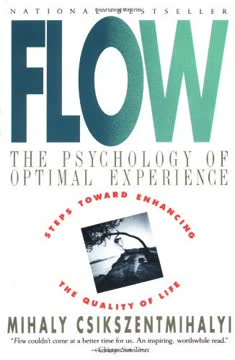Key Takeaways
1. Social influences powerfully shape individual behavior and beliefs
Human beings pay close attention to the informational and reputational signals sent by others.
Informational influence: People often rely on others' actions and statements as a source of information about what is true or correct, especially in ambiguous situations. This can lead individuals to doubt their own judgment and conform to the majority view, even if it contradicts their personal observations.
Reputational influence: The desire to maintain a positive image and avoid social disapproval can cause people to publicly agree with others, even if they privately disagree. This effect is amplified in groups with strong social bonds or shared identities.
Classic experiments demonstrating social influence:
- Asch's line judgment study: Subjects conformed to incorrect group answers 37% of the time
- Milgram's obedience experiments: 65% of participants administered apparently dangerous shocks when instructed by an authority figure
- Sherif's autokinetic effect study: Individuals' judgments converged in group settings, forming arbitrary group norms
2. Conformity can lead to both beneficial and harmful outcomes
Conformity creates severe dangers. Behavior that is sensible, prudent, and courteous is likely to lead individuals and societies to blunder, simply because people fail to learn about facts or opinions from which they would benefit.
Benefits of conformity: Social cohesion, efficient decision-making, and the spread of beneficial norms and practices. Conformity can help maintain social order and facilitate cooperation within groups.
Dangers of conformity: Suppression of important information, perpetuation of errors, and stifling of innovation. When people withhold their private knowledge or doubts, groups can make poor decisions based on incomplete information.
Factors influencing conformity:
- Group size (larger groups exert more pressure)
- Unanimity (a single dissenter greatly reduces conformity)
- Task difficulty (ambiguous situations increase reliance on others)
- Individual differences (confidence, expertise, and social status affect susceptibility)
- Cultural context (collectivist cultures show higher conformity rates)
3. Informational cascades spread ideas rapidly, sometimes erroneously
Simply by virtue of what it says, and even if it is rarely enforced, law can affect the behavior of those who are unsure whether to engage in certain conduct—and also the behavior of those who are unsure whether to challenge those who engage in that conduct.
Cascade mechanics: Cascades occur when people base their decisions primarily on the observed actions of others, rather than their own private information. This can lead to rapid adoption of behaviors or beliefs, even if they are incorrect or harmful.
Fragility of cascades: Because cascades rely on limited information, they can be easily disrupted by new information or the actions of influential individuals. This explains why fads and social movements can rise and fall quickly.
Examples of cascades:
- Financial bubbles and market crashes
- Adoption of new technologies or products
- Spread of political movements or ideologies
- Emergence of fashion trends
- Viral content on social media
4. Group polarization pushes like-minded people to extremes
Groups of like-minded people are likely to go to extremes, simply because of limited argument pools and reputational considerations.
Mechanisms of polarization:
- Limited argument pools: Discussion among like-minded individuals tends to reinforce pre-existing beliefs and generate new arguments supporting the dominant view.
- Social comparison: People adjust their positions to maintain or enhance their standing within the group, often by adopting more extreme views.
- Confidence through corroboration: Hearing others express similar views increases confidence in one's own position, leading to more extreme attitudes.
Consequences of polarization: Group polarization can lead to more extreme decision-making, increased intergroup conflict, and the formation of echo chambers that resist outside information. This phenomenon has significant implications for political discourse, jury deliberations, and organizational behavior.
Factors affecting polarization:
- Group composition (homogeneity intensifies the effect)
- Discussion topic (familiar, value-laden issues are more prone to polarization)
- Decision-making rules (unanimous decisions can amplify polarization)
- Presence of minority viewpoints (can moderate extremity)
5. Dissent plays a crucial role in preventing groupthink and errors
Dissenters benefit others, while conformists benefit themselves.
Value of dissent: Dissenters introduce new information, challenge assumptions, and prevent groups from making errors based on incomplete knowledge. They serve as "whistleblowers" against groupthink and can improve the quality of decision-making.
Costs of dissent: Individuals who express dissenting views often face social disapproval, reputational costs, and potential ostracism. This creates a collective action problem, where the group would benefit from hearing diverse views, but individuals are incentivized to conform.
Strategies to encourage beneficial dissent:
- Create psychological safety for expressing alternative viewpoints
- Institutionalize devil's advocate roles or red team exercises
- Reward individuals for improving group outcomes, not just for agreement
- Cultivate diverse teams with varied backgrounds and experiences
- Implement anonymous feedback mechanisms to reduce social pressure
6. Institutional design can promote or inhibit beneficial diversity
Well-functioning institutions take steps to discourage conformity and to promote dissent, partly to protect the rights of dissenters but mostly to protect interests of their own.
Promoting diversity: Institutions can be designed to encourage the expression of diverse viewpoints and prevent harmful conformity. This involves creating structures that reward the disclosure of private information and protect dissenters from retaliation.
Inhibiting diversity: Conversely, institutions that prioritize harmony, quick decision-making, or ideological purity may inadvertently suppress valuable dissent and increase the risk of errors.
Institutional design elements affecting diversity:
- Decision-making processes (e.g., voting rules, deliberation procedures)
- Incentive structures (rewards for group outcomes vs. individual conformity)
- Information flows (transparency, communication channels)
- Leadership styles (authoritarian vs. participatory)
- Organizational culture (emphasis on consensus vs. critical thinking)
- Diversity policies (recruitment, promotion, and retention practices)
7. Law's expressive function shapes behavior even without enforcement
An understanding of social influences casts new light on the expressive function of law.
Signaling effect: Laws communicate social values and expectations, influencing behavior even when not actively enforced. This expressive function works by providing information about what society considers right or wrong.
Norm management: Legal pronouncements can shift social norms by altering the perceived costs and benefits of certain behaviors. This can lead to compliance through informal social sanctions rather than formal legal penalties.
Examples of law's expressive function:
- Smoking bans in public places (high compliance with minimal enforcement)
- Seat belt laws (changing perceptions of safety and responsibility)
- Anti-discrimination laws (signaling societal rejection of bias)
- Environmental regulations (shaping corporate and individual behavior)
8. Constitutional structures aim to harness diverse views productively
The framers' greatest innovation consisted not in their belief in deliberation, which was uncontested at the time, but in their fear of homogeneity, their enthusiasm for diversity, and their effort to accommodate and to structure that diversity.
Deliberative democracy: The U.S. Constitution creates a system designed to promote reasoned debate and the exchange of diverse viewpoints. This approach aims to improve decision-making and prevent the tyranny of the majority.
Institutional safeguards: Various constitutional structures, such as bicameralism, separation of powers, and federalism, serve to create "circuit breakers" that prevent cascades and reduce the risk of extreme or ill-considered policies.
Constitutional mechanisms promoting diversity:
- Checks and balances between branches of government
- Federalism (allowing policy experimentation across states)
- First Amendment protections for free speech and assembly
- Equal protection clause promoting inclusion of minority groups
- Advice and consent process for judicial appointments
9. Diversity on courts and in education enhances decision-making
An understanding of group influences suggests the importance of ensuring a high degree of diversity on the federal bench.
Judicial diversity: Ideological diversity on courts, particularly on appellate panels, can improve decision-quality by introducing different perspectives and reducing the risk of extreme outcomes. This diversity helps counteract conformity effects and group polarization.
Educational diversity: In higher education, diversity of backgrounds and experiences can enhance learning by exposing students to a broader range of ideas and perspectives. This prepares students for engagement in a diverse society and workforce.
Benefits of diversity in decision-making:
- Introduces new information and arguments
- Challenges assumptions and reduces blind spots
- Moderates extreme positions
- Improves problem-solving and creativity
- Enhances legitimacy of institutions in diverse societies
Challenges in promoting diversity:
- Balancing diversity with other selection criteria (e.g., merit, expertise)
- Avoiding tokenism or essentialist views of group representation
- Managing potential short-term conflicts or reduced efficiency
- Addressing resistance from privileged groups
Last updated:
FAQ
What's "Conformity: The Power of Social Influences" about?
- Exploration of Conformity: The book delves into how social influences shape individual behavior and decision-making, often leading to conformity.
- Mechanisms of Influence: It examines the mechanisms through which conformity occurs, such as informational and reputational influences.
- Impact on Society: The book discusses the implications of conformity on societal issues, including law, politics, and group dynamics.
- Author's Perspective: Cass R. Sunstein provides insights into the balance between conformity and dissent, emphasizing the importance of diversity in thought.
Why should I read "Conformity: The Power of Social Influences"?
- Understanding Social Dynamics: The book offers a comprehensive understanding of how social influences affect individual and group behavior.
- Relevance to Current Issues: It provides context for contemporary social and political phenomena, such as polarization and tribalism.
- Practical Implications: Readers can gain insights into improving decision-making processes in personal, professional, and institutional settings.
- Authoritative Voice: Cass R. Sunstein is a respected scholar, bringing credibility and depth to the exploration of social influences.
What are the key takeaways of "Conformity: The Power of Social Influences"?
- Conformity's Dual Nature: Conformity can both stabilize society and lead to significant errors or atrocities.
- Role of Dissent: Dissenters play a crucial role in providing alternative perspectives and preventing groupthink.
- Institutional Design: Effective institutions should encourage diversity and dissent to mitigate the risks of conformity.
- Expressive Function of Law: Laws can influence behavior not just through enforcement but by signaling social norms.
How does Cass R. Sunstein define conformity in the book?
- Social Glue: Conformity acts as a social glue, promoting cohesion and shared norms within groups.
- Information and Reputation: It is driven by the information provided by others and the desire to maintain a good reputation.
- Complex Phenomenon: Conformity is more complex than it appears, involving both rational and irrational elements.
- Historical and Modern Contexts: The book explores conformity from historical events to modern-day social media dynamics.
What are the best quotes from "Conformity: The Power of Social Influences" and what do they mean?
- "Conformity is as old as humanity." This highlights the timeless nature of conformity as a fundamental aspect of human behavior.
- "For all the good that conformity does, it can also crush what is most precious and most vital in the human soul." This quote underscores the dual nature of conformity, acknowledging its potential to stifle individuality and creativity.
- "To live outside the law, you must be honest." Quoting Bob Dylan, Sunstein emphasizes the integrity required to dissent from prevailing norms.
- "The clash of views generates events of far-reaching importance." This reflects the book's theme that diversity of opinion is crucial for societal progress.
How does "Conformity: The Power of Social Influences" explain the role of dissenters?
- Corrective Function: Dissenters provide a corrective function by challenging prevailing norms and offering alternative perspectives.
- Social Benefits: While often seen as disruptive, dissenters can benefit society by preventing groupthink and promoting innovation.
- Encouragement of Diversity: The book argues for institutional designs that encourage dissent to ensure a diversity of viewpoints.
- Historical Examples: Sunstein uses historical examples to illustrate how dissent has led to significant social and political changes.
What is the expressive function of law according to Cass R. Sunstein?
- Signaling Norms: Laws express societal norms and values, influencing behavior by signaling what is considered acceptable.
- Beyond Enforcement: The expressive function operates even when laws are not actively enforced, as they shape perceptions and expectations.
- Visibility and Compliance: Laws are more effective when violations are visible, as this increases the likelihood of social enforcement.
- Subcultural Resistance: The book discusses how deviant subcultures can resist the expressive function of law by maintaining alternative norms.
How does "Conformity: The Power of Social Influences" address group polarization?
- Movement to Extremes: Group polarization occurs when like-minded individuals discuss an issue, leading to more extreme positions.
- Informational and Reputational Influences: These influences drive polarization by reinforcing shared beliefs and discouraging dissent.
- Impact on Society: Polarization can lead to societal divisions and hinder effective decision-making in groups and institutions.
- Mitigation Strategies: Sunstein suggests that promoting diversity and dissent can help mitigate the effects of group polarization.
What are informational cascades as described in the book?
- Sequential Decision-Making: Informational cascades occur when individuals make decisions based on the actions of those before them, rather than their own information.
- Potential for Error: Cascades can lead to widespread errors if early decisions are based on incorrect or incomplete information.
- Breaking Cascades: The book discusses how informed individuals can break cascades by introducing new information or perspectives.
- Institutional Implications: Understanding cascades can help design better decision-making processes in organizations and governments.
How does Cass R. Sunstein suggest institutions should be designed to handle conformity?
- Encouraging Dissent: Institutions should be structured to encourage dissent and the expression of diverse viewpoints.
- Rewarding Group Success: Reward systems should focus on group success rather than individual conformity to promote information sharing.
- Checks and Balances: The book advocates for checks and balances to prevent conformity from leading to poor decision-making.
- Diversity of Thought: Institutions should aim for cognitive diversity to ensure a wide range of perspectives and reduce the risk of groupthink.
What role does social media play in conformity according to "Conformity: The Power of Social Influences"?
- Amplification of Conformity: Social media can amplify conformity by creating echo chambers where like-minded individuals reinforce each other's views.
- Rapid Cascades: The platform facilitates rapid informational cascades, spreading ideas quickly and sometimes inaccurately.
- Tribalism: Social media can exacerbate tribalism, as individuals align with groups that share their beliefs and values.
- Opportunities for Dissent: Despite its challenges, social media also provides opportunities for dissenters to voice alternative perspectives and reach wider audiences.
What are the implications of "Conformity: The Power of Social Influences" for law and policy?
- Expressive Law: Understanding the expressive function of law can inform policy decisions, particularly in areas where enforcement is challenging.
- Institutional Design: Insights from the book can guide the design of institutions to promote diversity and mitigate conformity risks.
- Policy-Making: Policymakers can use the book's findings to anticipate and address the effects of social influences on public behavior.
- Legal Interpretation: The book's exploration of judicial behavior highlights the importance of diversity and dissent in legal interpretation and decision-making.
Review Summary
Conformity by Cass R. Sunstein explores the power of social influences on decision-making. Reviewers found the book's insights into group dynamics, cascades, and polarization intriguing, particularly in legal and political contexts. Many appreciated Sunstein's analysis of famous psychological experiments and their implications for society. However, some readers felt the content was repetitive or lacked depth in certain areas. While praised for its accessibility, the book's focus on the US judicial system in the latter half received mixed reactions. Overall, reviewers found it a solid introduction to conformity and its effects.
Similar Books







Download PDF
Download EPUB
.epub digital book format is ideal for reading ebooks on phones, tablets, and e-readers.












